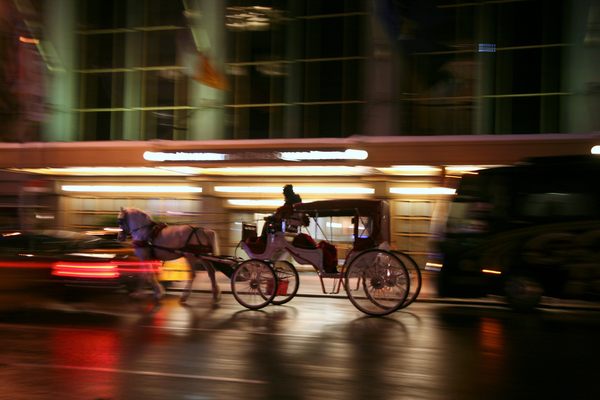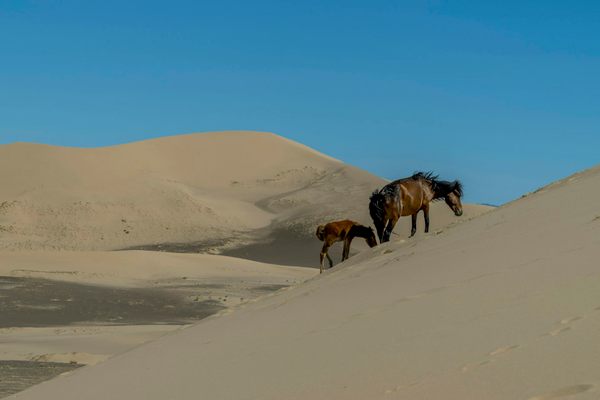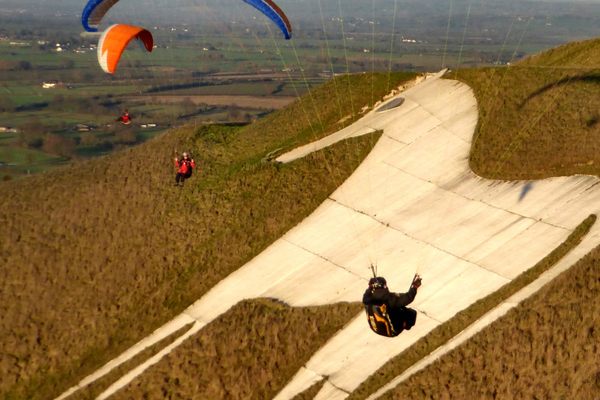Behind the Scenes With the Horses of Hollywood
How equine members of the film industry prepare for on-camera roles.

Training a horse to be an actor is almost as amazing as seeing them on screen. (Photo: Dreamworks/Wikipedia)
When a character in a movie or a TV show effortlessly hops on the back of a horse and rides off like hell’s on their heels, it seems like it’s no big deal. But making horses perform on camera takes a surprising amount of planning and preparation, leaving the horses better trained and cared for than most of the actors.
Horses have been a fixture of the moving picture world literally since the beginning. The very first “film” is often considered to be Eadweard Muybridge’s shot of a galloping horse, created by a series of still photographs that he displayed in a spinning zoopraxiscope that gave the illusion of motion. As motion pictures evolved into silent films, talkies, and the movies and TV we love today, horses have been an integral part of the business.

The first movie, the first movie horse. (Photo: Eadweard Muybridge/Public Domain)
Jack Lilley is the owner of Movin On Livestock, a motion picture barn that has been supplying animals for TV and film for four generations. Hired to oversee the equine handling on movies like the upcoming Magnificent Seven, Lilley ensures Hollywood’s horses are kept safe and happy. This requires patience, training, and selecting the right animals in the first place.
As with humans, not just any horse is cut out to be a star. Before a horse can even gallop on set they need to be vetted for their disposition. If a horse is too skittish, or “looky” as Lilley describes them, they might not be a great choice to bring to a bustling movie set full of flashing lights, loud noises, and frantic people. “We don’t want any of them prancing or high-powered horses,” says Lilley. “We want that type that you could put [your kids] on, and say, ‘Ride him home.’” It’s important that a movie horse isn’t startled or spooked easily, both for the safety of the riders and the animals. “All in all, the American Quarter Horse is the best. They’ve got the best disposition and nothing bothers them.”

Some stallion stars from Unforgiven (Photo: Warner Brothers/Screenshot from Netflix)
Once Lilley’s ranch gets a new horse, which are bought from the age of five and up, often from more traditional ranches, his team slowly acclimate them to being on a movie set. Cowboys—real ones, not movie ones—will slowly ride the horses around a set with the lights and production pieces in place. “I like to start them on a big street scene,” says Lilley. “Pretty soon they see that nothing’s going to bother them.” Ideally they’ll acclimate to the madness of a movie set to the point of being shockingly docile. “[The ideal horse is one that] you could fall all over. If you were doing a fight, you could roll under his belly and he wouldn’t try to step on you,” says Lilley.
All behind-the-scenes hustle and bustle aside, a horse in a film is pretty likely to take part in a scene with gunfire, or some other violent activity. Whether it’s an epic war movie like War Horse (which Lilley’s ranch also had a part in), or an oater like True Grit (either version), or a fantasy romp like Lord of the Rings, the horses are in for some loud, action-packed activity, and even the calmest steed needs to be acclimated to it. To do this, Lilley takes the direct approach in his training, firing off some guns around them until it doesn’t scare them. Of course, this is done with with the health and safety of the horse in mind. “We’ll take them down to the sand and ride them and shoot quarter blanks,” says Lilley, referring to a cartridge with less kick than a normal bullet. Shots are fired away from the animals, not, Lilley says, “over the horse’s head, or to the side of it.”
Most movie horses are trained for general on-camera appearances, but some end up being trained into specialty roles as well, such as falling or jumping. Whenever you see a horse fall down on screen, either from being killed or knocked down, that horse has been trained to do so in a way that won’t hurt them or the rider. Lilley’s ranch teaches the animals to do this by lifting their legs and laying them down, then walking them, then laying them, again and again until the horse can do it themselves on cue. But finding these specialty horses is harder than finding general-use movie horses.
Even once a horse is trained and ready for the spotlight, special preparations are often made on set to make sure that the experience is easy on the animals. A common practice is preparing the ground over which there is going to be a chase or a stampede. In movies it is a common sight to see people hop on horseback and gallop off at full speed. But in reality this can be incredibly hard on the horses pounding along the solid ground, not to mention the possibility of them tripping or breaking an ankle in some unseen divot. To make sets safe for the animals, Lilley says that the ground will be tilled up until it’s soft, or a thick layer of sand will be laid down for them to run across. Almost nothing with a horse on film is as simple as the narrative makes it.
Any actor that’s going to get on a horse needs to be specially coached as well. Lilley won’t allow untrained actors to ride the horses, or let the directors overwork them. He says that he’s nearly come to blows with directors trying to drive the animals too hard. The American Humane Association has monitored and regulated animal safety standards on film sets since the 1930s, spurred on by the death of a horse on the set of 1939’s Jesse James.
While the association has protected animal stars for decades, to hear Lilley tell it, the wranglers of the horses are just as concerned—if not more. “There’s none of that beating and whipping on them,” says Lilley. “You’re getting nothing doing that to them. Patience is the biggest thing.” Even when a horse is ready to retire, Lilley says that he looks for a good home for them, giving them to families where they’ll have a cushy rest of their life.
It’s easy to forget the equine actors that bring our movies and TV shows to life are just as trained as the attractive men and women on their backs, they deserve all the care and preparations they get. Next time you see Jon Snow gallop back under The Wall (we all know he’s coming back), or a highlander woo someone from horseback on Outlander, don’t forget the stoic animals that make it possible.


















Follow us on Twitter to get the latest on the world's hidden wonders.
Like us on Facebook to get the latest on the world's hidden wonders.
Follow us on Twitter Like us on Facebook